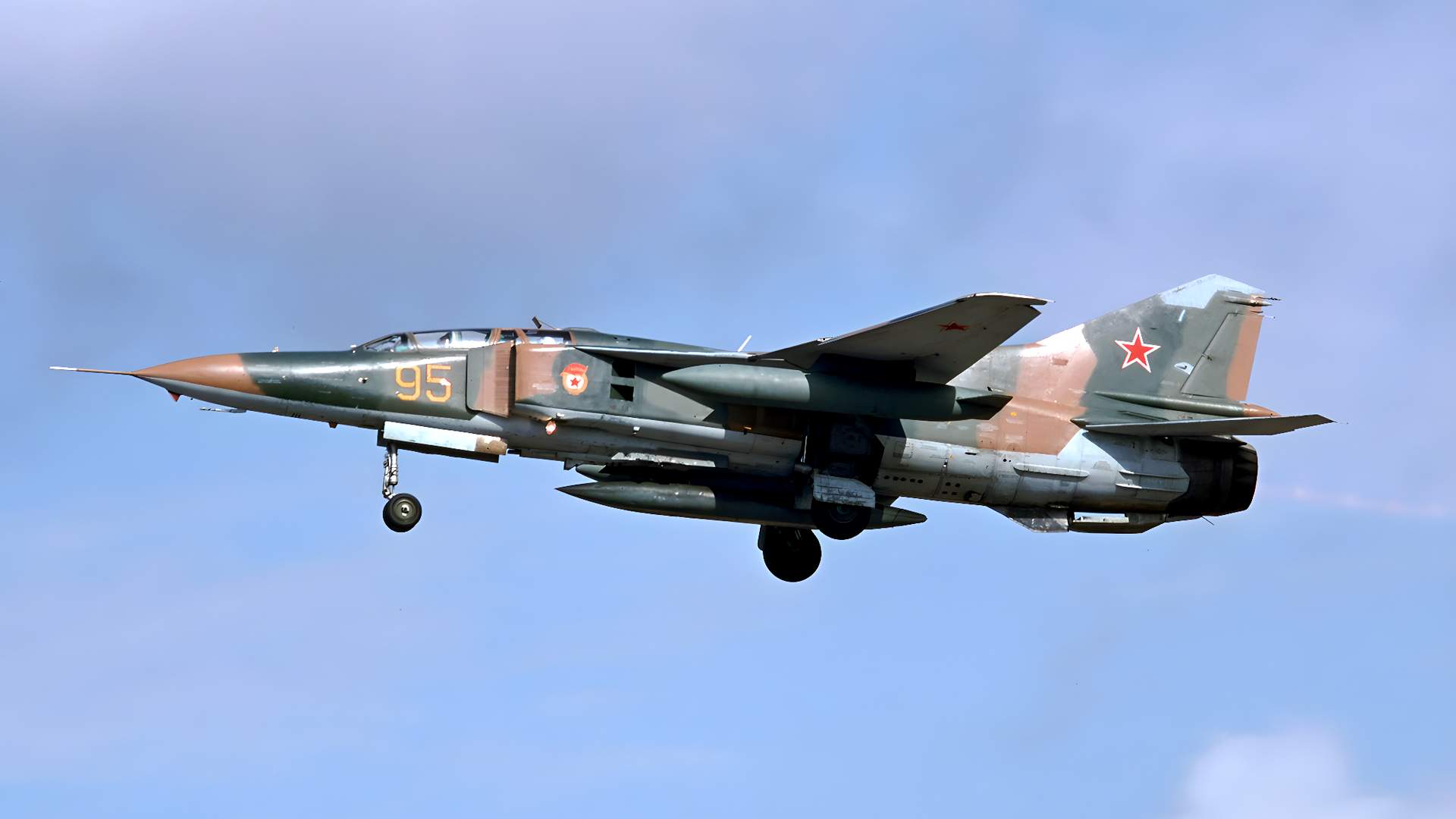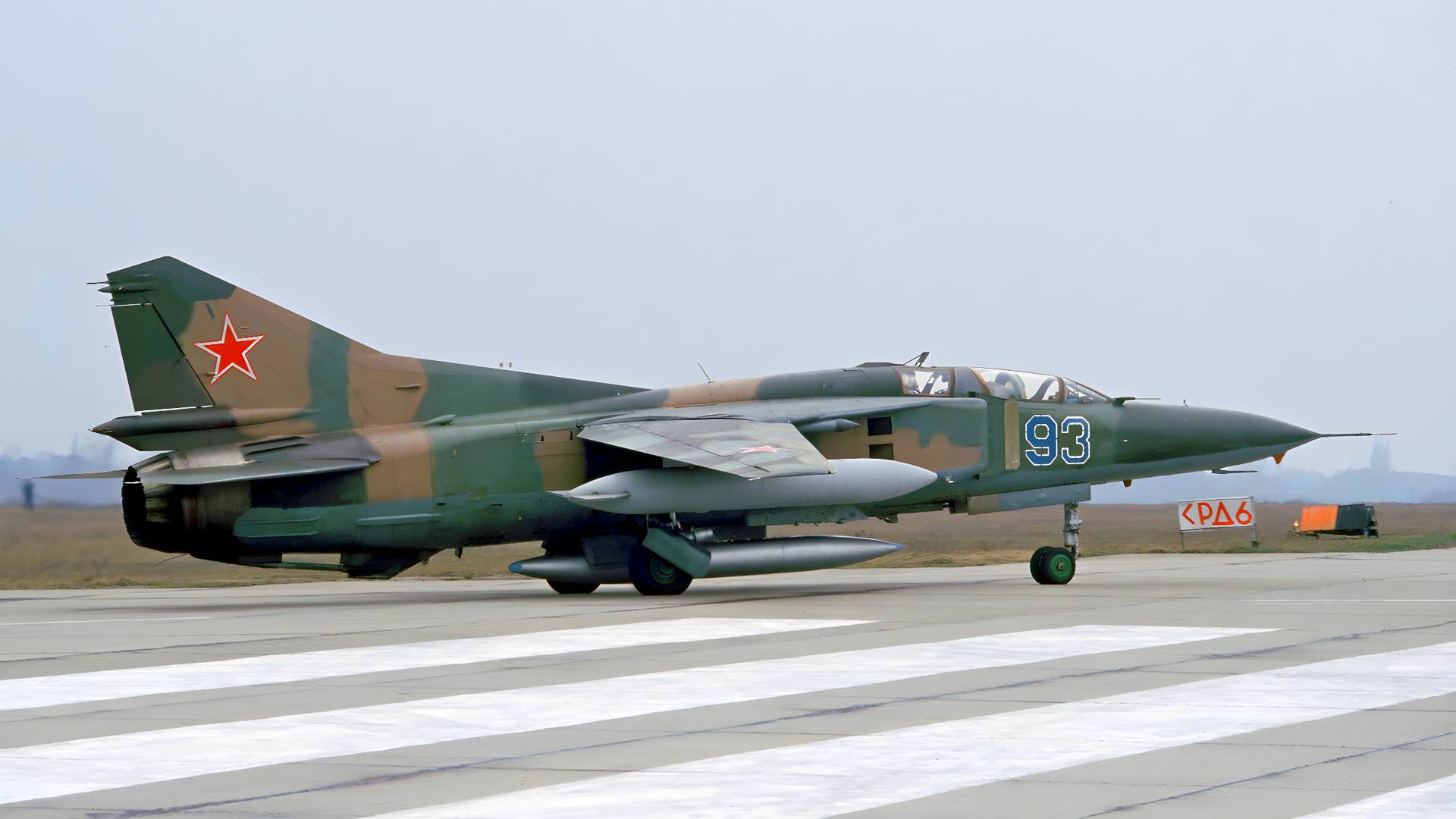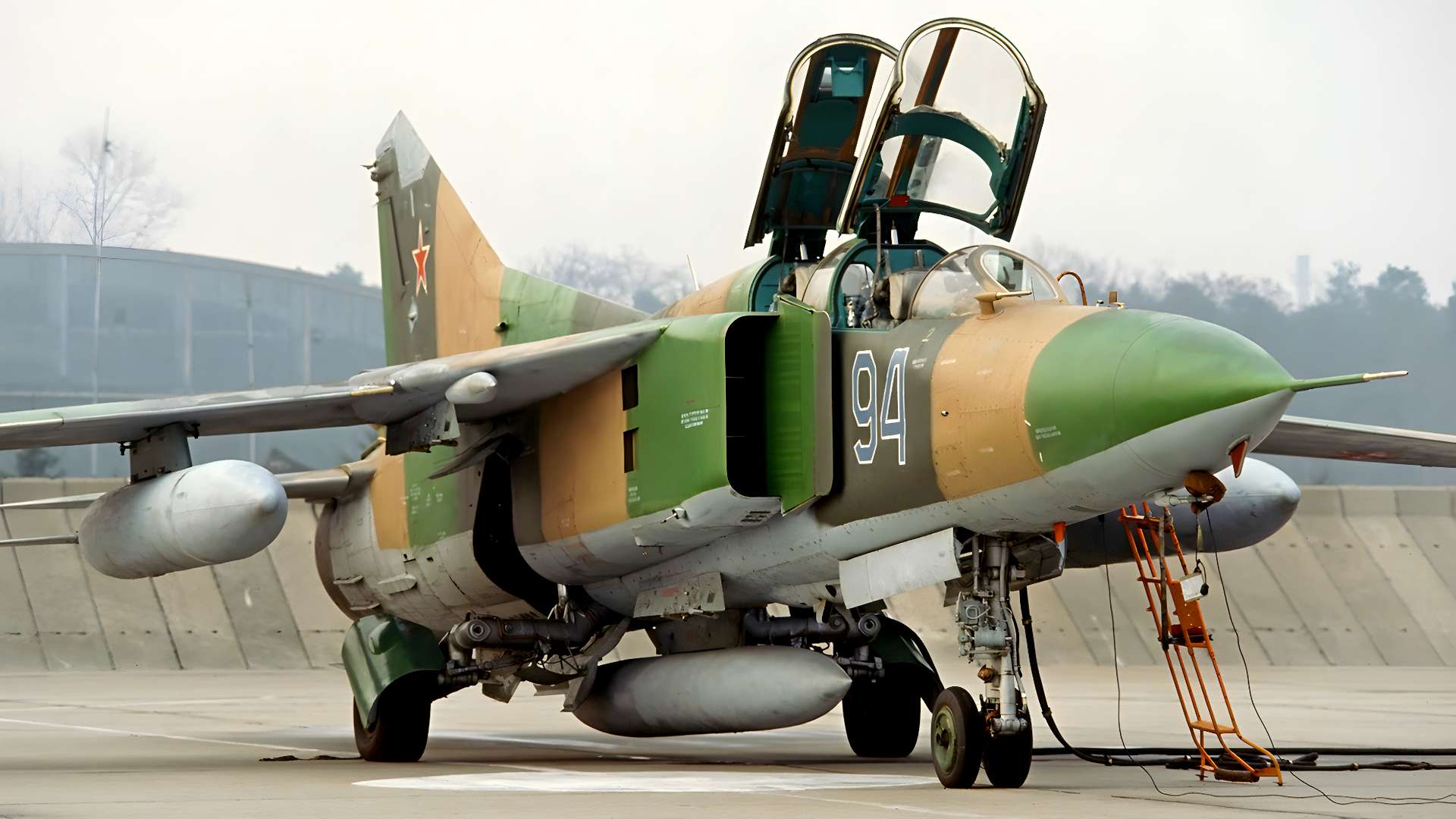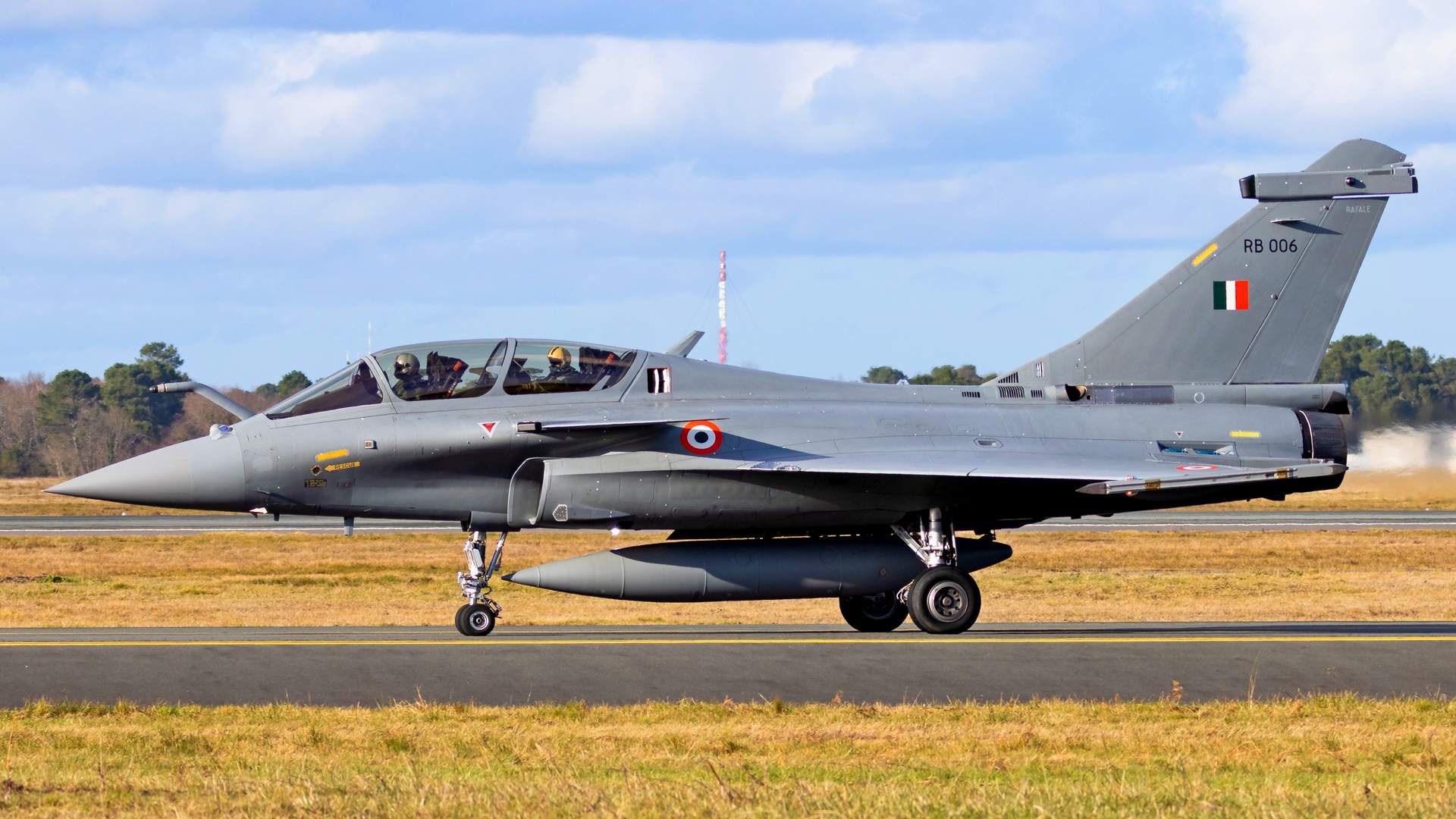The NTSB released more details on the circumstances in which the occupants of a privately-owned MiG-23 jet recently ejected over Michigan.
It is not uncommon to see ex-military aircraft in private hands, but some types are less common than others. The Mikoyan Gurevich MiG-23 is a Soviet fighter, dating back to the 1960s and 70s. It is a single-engine, multi-role fighter aircraft, with variable-geometry wings.

The MiG-23 in the accident that the NTSB is currently investigating is a two-seater training variant, called the MiG-23UB. It belonged to former U.S. Navy pilot Dan Filer, had serial number 8107, and registration N23UB.
This particular jet first entered service in 1981, in the hands of the Czechoslovakian Air Force. The aircraft arrived in the United States in 2006, with Dan Filer taking ownership of it about a decade later. The jet was the only privately owned, airworthy MiG-23 in the world.

This mishap happened during the “Thunder over Michigan” Airshow, on the 13th of August this year. Fortunately, the aircraft’s two occupants suffered only minor injuries. Their aircraft hit the ground and disintegrated.
The NTSB Preliminary Report on the MiG-23 Ejection
The explosion and fire that followed thankfully didn’t engulf any structures on the ground. Much of the aircraft ended up in a parking lot, damaging one or more unoccupied vehicles. The aircraft’s rear section ended up very close to a residential building, but nobody was hurt on the ground.
Before the NTSB preliminary report, there was only vague information that the MiG-23 had “engine issues”. But many assumed that Filer, as the pilot in command in the front seat, was the person initiating the ejection.
This now doesn’t appear to be the case. According to the NTSB report, Filer stated that he had completed a pass over the field with the MiG-23 when he noted that the engine’s afterburner did not ignite. He then started troubleshooting the problem, which included swinging the wings to the fully forward position.
https://twitter.com/captainkudzu/status/1692295796694155539?s=2The NTSB report shows that the “rear seat observer” in the MiG-23 was aware of the engine issue. This individual was also a pilot, but at this time we don’t know if he had experience in the aircraft or if he was flying in it for the first time.
In any case, the rear seater noted that the aircraft was decelerating. This was after a shallow climb, and following the wing’s sweep to the fully-forward position. The rear seater said that “he could not specifically remember” pulling the ejection handle.

A Disagreement (and a previous event)
However, he told the NTSB that at the time he felt that they both needed to leave the MiG-23 because the aircraft did not have sufficient altitude to make it back to runway 27. Filer remembers the rear seater saying they needed to eject, but his response was that he wasn’t ready.
The pilot reported that he was still actively troubleshooting the engine issue when the ejection sequence began. Filer told the NTSB that this MiG-23 was configured so that if either occupant pulls the ejection handle, both seats eject.

This accident has some similarities with an older event, involving an individual who got a ride in a French Air Force Dassault Rafale. On that occasion, the somewhat nervous passenger wasn’t tied down in his seat properly.
So when the aircraft momentarily pulled negative Gs shortly after takeoff, the back-seater grabbed the first thing he could, to hold on. Unfortunately, what he grabbed turned out to be the ejection handle. He ejected safely. The pilot in the front seat should have been ejected in sequence, too. But a malfunction kept the front seat from firing – which luckily meant that the pilot could land this aircraft safely.



